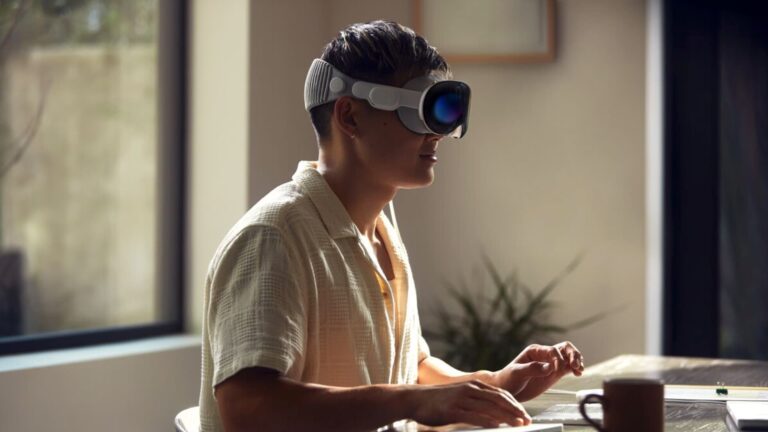
Apple’s Vision Pro announcement was a masterclass in long-game retail strategy. For decades, Apple has been transforming how we use devices. It isn’t the first to reach market. It lets devices emerge – mp3 players, smartphones, tablets, wearable devices – then designs its own products with an elite ability to anticipate intuitive future use. Each time, the device Apple creates – the iPod, iPhone, iPad, Apple Watch – has redefined the category, setting the bar for experience and usability.
Now, Apple is betting big on AR. Can it do it again and reinvent headsets with the Vision Pro? Adoption of the devices themselves may take some time. But with the largest US mobile device user base, Apple’s investment in XR has immediate impacts on eCommerce. Here are a few ways that’s already materializing.
1. UX standard evolution: Consumers will expect depth and presence
Apple has long been a frontrunner in delivering exceptional user experiences (UX), and with Vision Pro, they are taking it a step further. Spatial UX will become a focus, as customers begin to expect a sense of depth and presence when interacting with e-commerce experiences and products. As with every Apple release, they will promote and reward experiences that exemplify its aesthetic. Apple has already launched its Principles of Spatial Design. Prepare for this aesthetic to enter the visual zeitgeist and take over.
2. Content gets real: 2D product photos will no longer be enough
3D product experiences (and critically, 3D assets) will shift in importance to digital shopping – from competitive advantages to table stakes. To prepare for consumers arriving natively, retailers (both large and small) should establish a pipeline to showcase their product catalogs in 3D to maintain best-in-class experiences.
3. Making it yours: Customization will matter even more
Apple’s configurable headset design reflects its understanding of the importance of customization. By allowing users to personalize their VR experience, Vision Pro empowers individuals to adapt the interface, controls, and visual settings according to their preferences. This configurability, “making it mine,” builds shopper familiarity and confidence in a product. The choice to provide configuration is a nod to making the headset feel personal.
4. Insight revealed: 3D behavioral data will generate new value
Apple’s dedication to observational user research is evident in its WWDC video showcasing Vision Pro. By gaining deep insights into how users interact with the technology, Apple can deliver intuitive experiences that feel natural. As this new medium unfolds, analytics will become the linchpin for understanding user behavior and preferences, enabling retailers to refine their strategies and provide seamless, user-centric shopping experiences. Creating opportunities to capture data within the experience will be key to gathering insights while adhering to Apple privacy guidelines.
5. Line of sight: Immersive shopping will naturally include AR
The iPhone is already the most popular AR device you didn’t know you already had. With the adoption of AR headsets, the experience for buyers to view your products in their spaces will be much more natural and intuitive. When they can simply look and ask for recommendations based on their space, having available 3D products becomes crucial for retailers that want to be part of that conversation.
6. The unknown adoption curve: Platforms will be key for expanding reach
Apple’s stock ups and downs after the announcement revealed that the market is uncertain how long it will take for Vision Pro to reach mass adoption. This means that for brands, it is crucial to have a device-agnostic 3D platform that can cross phones and headsets as a foundation for future devices.
Will Vision Pro become an overnight success, or will it build over time?
In either case, the world’s most valuable company going all-in on Augmented Reality will change buyer expectations for 3D experiences. That gravitational pull will accelerate AR’s evolution.

Patrice Hall is director of product at Dopple.

